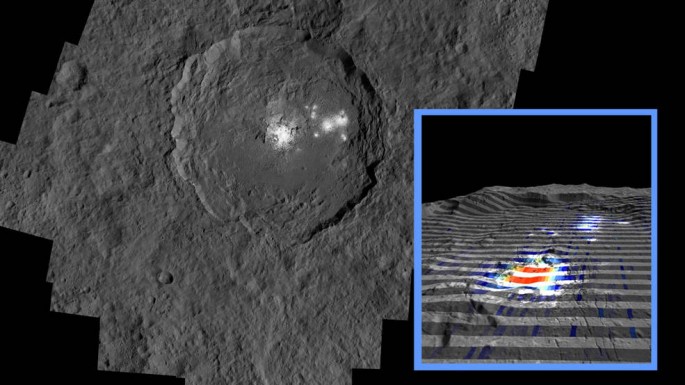The mysterious bright spots on dwarf planet Ceres have been an enigma for astronomers and scientists as underground material from its interior are exposed due to impact strikes that pockmark the surface of this planet, located in the major asteroid belt between Mars and Jupiter.
After NASA's Dawn spacecraft obtained closeup images of the surface of Ceres almost a year ago, scientists have identified more than 130 bright spots pockmarking its surface.
According to a team of scientists from the Max Planck Institute for Solar System Research in Germany, these spots are also consistent with a certain kind of magnesium sulphate that are similar to Epsom salts.
In this new study, details from images captured by the Visible and InfraRed Mapping Spectrometer onboard the Dawn spacecraft reveals bright material that is vastly different from crater floor material, including most material found on the surface of Ceres, according to a team from Italy's National Institute for Astrophysics.
What's even more intriguing is that this material is unlike any asteroids or comets, which means that this material originated and evolved within Ceres.
Researchers believe that this comes from the core of the planet and possibly represent an exposure of deeper material that emerged onto the surface due to powerful collisions and impacts, creating fractures and cracks.
Scientists also say that Ceres is cracking or bleeding due to these impacts, which can also reveal subsurface fluids from its crust or could "transiently" still exist. This transient liquid within the surface of Ceres would suggest hydrothermal activity, that the dwarf planet is warmer than first thought, or even that an impact that formed on the Occator may have increased the temperatures that can melt water ice.
Now, scientists say that this material is made from sodium carbonates that are also found on Earth to lower the melting point of silica to make glass, including other types of salts and ammonium chloride.
This new study is published in the journal, Nature.



























